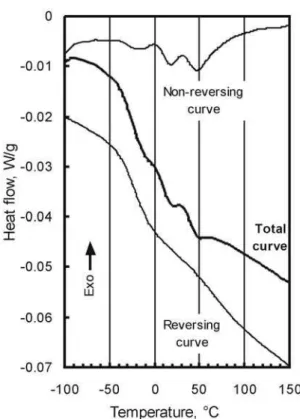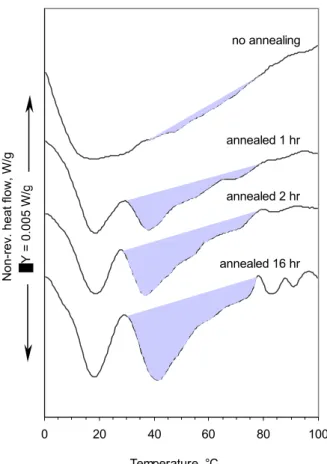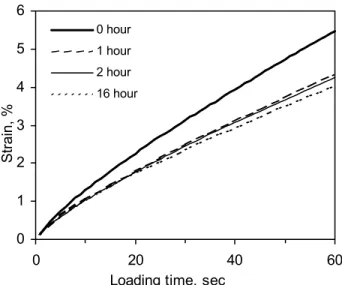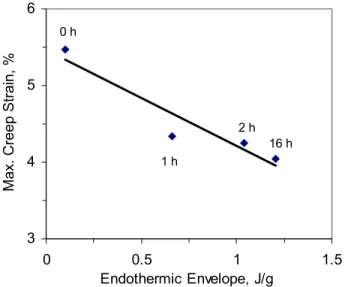Publisher’s version / Version de l'éditeur:
Energy & Fuels, 19, January 1, pp. 120-122, 2005-01-01
READ THESE TERMS AND CONDITIONS CAREFULLY BEFORE USING THIS WEBSITE.
https://nrc-publications.canada.ca/eng/copyright
Vous avez des questions? Nous pouvons vous aider. Pour communiquer directement avec un auteur, consultez la
première page de la revue dans laquelle son article a été publié afin de trouver ses coordonnées. Si vous n’arrivez pas à les repérer, communiquez avec nous à PublicationsArchive-ArchivesPublications@nrc-cnrc.gc.ca.
Questions? Contact the NRC Publications Archive team at
PublicationsArchive-ArchivesPublications@nrc-cnrc.gc.ca. If you wish to email the authors directly, please see the first page of the publication for their contact information.
Archives des publications du CNRC
This publication could be one of several versions: author’s original, accepted manuscript or the publisher’s version. / La version de cette publication peut être l’une des suivantes : la version prépublication de l’auteur, la version acceptée du manuscrit ou la version de l’éditeur.
For the publisher’s version, please access the DOI link below./ Pour consulter la version de l’éditeur, utilisez le lien DOI ci-dessous.
https://doi.org/10.1021/ef0498667
Access and use of this website and the material on it are subject to the Terms and Conditions set forth at
Steric hardening and the ordering of asphaltenes in bitumen
Masson, J-F.; Collins, P.; Polomark, G. M.
https://publications-cnrc.canada.ca/fra/droits
L’accès à ce site Web et l’utilisation de son contenu sont assujettis aux conditions présentées dans le site LISEZ CES CONDITIONS ATTENTIVEMENT AVANT D’UTILISER CE SITE WEB.
NRC Publications Record / Notice d'Archives des publications de CNRC: https://nrc-publications.canada.ca/eng/view/object/?id=7dee6750-c4ad-4d2d-b11d-c22f1432fc62 https://publications-cnrc.canada.ca/fra/voir/objet/?id=7dee6750-c4ad-4d2d-b11d-c22f1432fc62
Steric hardening and the ordering of asphaltenes in bitumen
Masson, J-F.; Collins, P.; Polomark, G.
NRCC-47288
A version of this document is published in / Une version de ce document se trouve dans: Energy & Fuels, v. 19, no. 1, Jan. 2005, pp. 120-122
Doi:10.1021/ef0498667
Steric hardening and the ordering of asphaltenes in bitumen
J-F. Masson*, Peter Collins, and Gary Polomark
Institute for Research in Construction, National Research Council of Canada *To whom correspondence should be addressed. Phone: (613) 993-2144.
Fax: (613) 952-8102. E-mail: jean-francois.masson@nrc.gc.ca
Abstract
Steric hardening is the hardening of bitumen over time at room temperature. It occurs after bitumen is melted and it often leads to poor reproducibility in standard testing. Modulated differential scanning calorimetry shows that asphaltenes order when bitumen is cooled from the melt and that this phenomenon is time dependent. This communication establishes the link between the ordering of the asphaltenes in bitumen and its steric hardening. It is suggested that at least 24 h elapse between the melting and pouring of bitumen and its subsequent testing by standardized methods.
Introduction
When bitumen is heated and poured, it often hardens over hours or days.1,2 This makes for difficult characterization and poor reproducibility in viscosity and ductility measurements.3 The time dependency of hardening has been referred to as steric hardening since it was first associated with a sol-gel transformation4 and then related to asphaltenes in bitumen.2 Fundamental studies of the phenomenon have been lacking, and
as a result it is often simply said that steric hardening results from molecular restructuring.5 The nature of this restructuring remains unclear, however.
Recently, it was shown by modulated differential scanning calorimetry (MDSC) that when bitumen is melted, the asphaltenes blend with the maltenes, and that upon cooling from the melt to room temperature the asphaltenes segregate and form an independent mesophase.6,7 The segregation being time dependent, it was suggested that the formation of the mesophase was responsible for the steric hardening of bitumen. This communication provides evidence of this relationship.
Experimental
The bitumen studied contained 10, 52, 22 and 16 wt. percent of saturates, aromatics, resins and asphaltenes, respectively, as measured by thin-layer chromatography-flame ionization detection.8 The ordering of the asphaltenes in the bitumen was assessed from the non-reversing heat flow obtained by MDSC between –100 and 150°C after the sample had been cooled rapidly from room temperature. The heating rate was 3°C/min, the modulation 60 s, and the amplitude ±0.47°C.6,7 Bitumen strain was measured at 25°C between 8 mm parallel plates with a Paar-Physica dynamic shear rheometer model MCR500. Strains were measured on 0.5 mm films upon the application of a 1 kPa load for 1 min. The strains were measured after 0, 1, 2 and 16 h of annealing after bitumen was heated to 100°C and cooled to 25°C.
Results and Discussion
A typical result from the MDSC analysis of bitumen is shown in Figure 1. The total heat flow, which is the standard (non-modulated) DSC signal, is deconvoluted into reversing and non-reversing heat flows.9,10 In the simplest case, the reversing heat flow
arises from amorphous material. This signal was used to identify several Tgs in bitumen.6
In contrast, the non-reversing heat flow arises from ordered and partially ordered phases (mesophases). In bitumen, this signal was used to differentiate the ordering of the saturated segments and of the asphaltenes.6 Upon heating bitumen, the isotropization of the mesophasic asphaltenes is revealed by a broad endotherm centered at 50°C.6,7 The size of this endotherm depends on the annealing time at room temperature; it is close to zero in freshly melted bitumen and it grows to >80% of its full size, in the as-received or fully annealed sample, in about 16 h (Figure 2).
The presence of an isotropization endotherm in the MDSC non-reversing heat flow curve indicates that asphaltenes segregate out of the melt upon cooling.6 This phenomenon is reminiscent of unstable binary mixtures that show an upper critical solution temperature (UCST)11 where the initial mixture of composition φ segregates into two phases of composition φ’and φ” upon cooling as determined by a spinodal curve (Figure 3). With bitumen, the two phases are the maltenes and the asphaltenes, and what the MDSC non-reversing heat flow effectively shows (Figure 2) is the rate at which the asphaltenes segregate out of the maltenic phase to form the asphaltenic mesophase.6 Given the isotropization of the mesophase at 40-50°C and the steric hardening below 60°C,3 a UCST is likely close to 60°C. It would be below this UCST that asphaltenes would order into a mesophase, possibly due to nucleation and growth,11 and that steric hardening would arise. This would lend credence to an early suggestion of Brown et al.2 that steric hardening arises from asphaltenes, but thus far the rate of steric hardening has not been correlated to the rate of ordering of the asphaltenes, which would be conclusive evidence linking steric hardening to the segregation and ordering of the asphaltenes.
The hardening of bitumen over time can be illustrated by the change in strain upon the application of a load (Figure 4). The strain depends on the annealing time at room temperature, and it approaches an asymptotic value in 16-24 h, like the endotherm in Figure 2. The decrease in strain over time and the increase in the size of this endotherm show a good linear correlation (Figure 5), which demonstrates that steric hardening arises from the time-dependent formation of asphaltenes into a mesophase.
Conclusion
Steric hardening in bitumen was correlated to the ordering of its asphaltene fraction by means of modulated DSC and strain measurements. The process occurs to a large extent within one day. To maintain good reproducibility with standard test results, it is therefore suggested that at least 24 h elapse between the melting and pouring of bitumen and its testing. Of more fundamental interest is the effect of bitumen aging and polymer modification on the association of the asphaltenes in solid bitumen and the rate of steric hardening. These issues will be the subject of future publications.
References
(1) Traxler R. N.; Schweyer, H. E. Proc. ASTM 1936, 36, 544–560.
(2) Brown, A. B.; Sparks, J. W.; Smith, F. M. Proc. Assoc. Asphalt Paving Technol.
1957, 26, 486–494.
(3) Dickinson, E. J. Interlaboratory Precision of the Measurement of Bitumen Viscosity and the Increase in Viscosity Produced by the Rolling Thin Film Oven Treatment, Report AIR 820–1, Australian Roads Research Board, Victoria, Australia, 1978. (4) Traxler R. N. ; Coombs, C. E. Proc. ASTM 1937, 37, 549–557.
(5) Bell, C. A.; Abwahab, Y.; Cristi, M. E. Transp. Res. Rec. 1991, 1323, 32–46. (6) Masson, J-F.; Polomark, G. Thermochim. Acta 2001, 374, 105–114.
(7) Masson, J-F.; Polomark, G.; Collins, P. Energy Fuels 2002, 16, 470–476. (8) Masson, J-F.; Price, T.; Collins, P. Energy Fuels 2001, 15, 955–960. (9) Reading, M. Trends Polym. Sci. 1993, 1, 248–253.
(10) Gill, P.S.; Sauerbrunn, S.R.; Reading, M. J. Therm. Anal. 1993, 40, 931–939.
(11) Masson, J-F.; Collins, P.; Robertson, G.; Woods, J.; Margeson, J. Energy Fuels
Captions
Figure 1. Typical MDSC results for bitumen. From ref. 6.
Figure 2. The non-reversing curve between 0 and 100ºC for bitumen. The shaded
area helps to view the growth of an endotherm at 40-50ºC. Adapted from reference 6.
Figure 3. Typical phase diagram for a binary mixture with a UCST and spinodal
curve delimiting the 1- and 2-phase regions. TR is the room temperature, φ the initial
volume composition, and φ’ and φ” the compositions of the segregated phases.
Figure 4. Creep strain curves for bitumen annealed 0, 1, 2 and 16 h at room
temperature.
Figure 5. Correlation between the maximum strain and endotherm size from Figures
0 20 40 60 80 100 Temperature, °C N on-rev. heat f low , W/ g Y = 0. 005 W/ g no annealing annealed 1 hr annealed 2 hr annealed 16 hr
Figure 2. The non-reversing curve between 0 and 100ºC for bitumen. The shaded
UCST Segregation φ 2-phase region TR φ φ” Cooling T φ’ 1-phase region
Figure 3. Typical phase diagram for a binary mixture with a UCST and spinodal
curve delimiting the 1- and 2-phase regions. TR is the room temperature, φ the initial
volume composition, and φ’ and φ” the compositions of the segregated phases.
0 1 2 3 4 5 6 0 20 40
Loading time, sec
Strain, % 60 0 hour 1 hour 2 hour 16 hour
Figure 4. Creep strain curves for bitumen annealed 0, 1, 2 and 16 h at room
3 4 5 6 0 0.5 1 1.5 Endothermic Envelope, J/g
Max. Creep Strain, %
0 h
1 h
2 h 16 h
Figure 5. Correlation between the maximum strain and endotherm size from Figures



